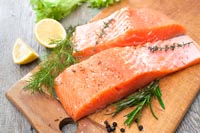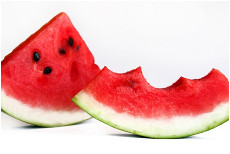Papaya
/Papayas are tropical fruits that are high in Vitamin C, providing over 300% of your daily need in one serving. They are also high in Vitamin A, making them a great nutrient-rich food for the skin. Papayas have other amazing health benefits as well that make them a summer super food. They are rich in antioxidants, carotenes, flavonoids, and minerals. Because they are high in fiber, it helps the body absorb the sugars they contain at a slower rate. They help promote the health of the cardiovascular system, digestive system, and provide protection against colon cancer, rheumatoid arthritis, and macular degeneration. Because papaya contains the digestive enzyme, papain, it also helps aid in digestion and can reduce inflammation. To get more papaya in your diet consider eating it fresh, blending it in smoothies, or adding it to salads. Papaya seeds are edible, and some like their slightly peppery flavor but you do not have to eat the seeds to get the many health benefits of the fruit. Simply scoop them out and eat the Papaya like you would any other melon.
References
- "Papaya". World's Healthiest Foods. http://www.whfoods.com/genpage.php?tname=foodspice&dbid=47
- Rakhimov MR. Pharmacological study of papain from the papaya plant cultivated in Uzbekistan (Article in Russian). Eksp Klin Farmakol 2000 May-Jun;63(3):55-7. 2000.
- Wood, Rebecca. The Whole Foods Encyclopedia. New York, NY: Prentice-Hall Press; 1988. 1988. PMID:15220
Image Attribution: aladin66/istockphoto.com
















